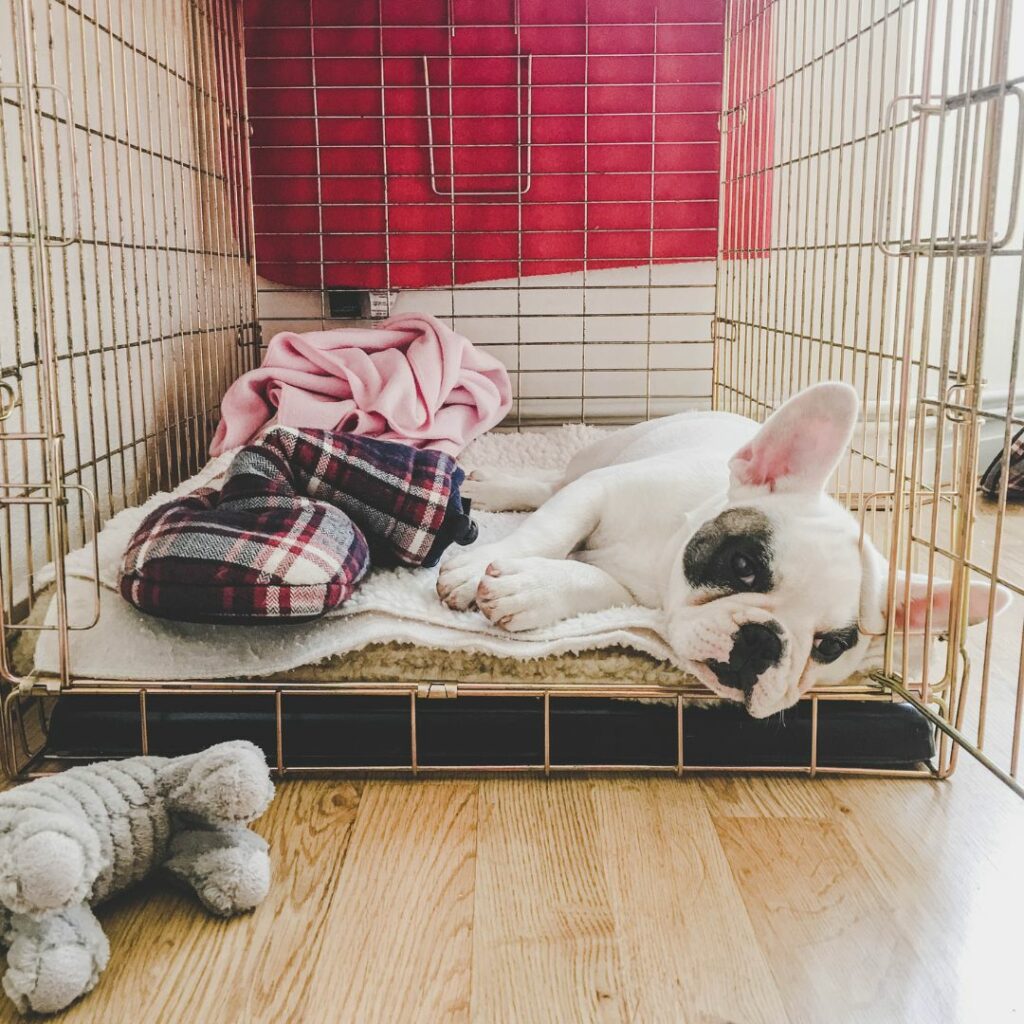New dog owners can sometimes resist crate training, thinking it’s a bit cruel, locking their dog up at night or when they’re not at home. Or they want the dog with them all the time and see no need. But crate training is a good idea, whether you think you need it or not. Over time, you’ll come to see that it’s good for you and that it’s good for your dog.
When you crate train your dog, you’re actually tapping into their natural instinct to seek out small spaces for shelter, comfort, and safety. So take comfort yourself knowing that this is a routine that they will (eventually) enjoy and appreciate.

Benefits of crate training
Crate training is important in cases of emergency. You want your dog to willingly and easily get into a crate if you suddenly need to transport them to the vet, for example, or if you need to leave your home quickly. If they’re already used to their crate, this will ensure their safety and decrease their stress.
Crate training is also helpful when you’re housebreaking a puppy, because dogs do not like to soil where they sleep. They will, therefore, learn to hold their bladders by being in their crates. (As long as they’re not in there too long.)
Crates are also really helpful for when you have something new happening in your home and you’re worried about your dog’s reaction. Being in the crate gives them time to assess and acclimate to the situation, whether it’s someone they don’t know coming for a visit, a workman doing something around the house, or something bigger like a new infant coming into the family.
As your dog gets older and is perhaps facing some health issues, the crate can be a source of comfort and constancy. You can also limit their activity if need be when you’re dealing with something like arthritis, post-surgical rest, or side effects like unsteadiness from medications.
Basic tips for crate training
- Never use your crate as punishment with your dog. You want your dog to think of the create as a peaceful refuge. You will likely, eventually, find them resting in the crate on their own if you leave the door open.
- Do not leave your dog in a crate for too long. Firstly, they need potty breaks (depending on their age this varies), and secondly, they want to spend time with you. That’s their nature. They need socialization and physical activity.
- Don’t rush crate training. Above all else, you want the crate to be a happy place for your dog so stress will not help.
- Make sure your crate is the right size. They should be able to stand up and move around, but it shouldn’t be so big that they can create a sleeping and a potty space. Here are some great tips about choosing the right crate.
- If you’re putting your dog in the crate because you’re leaving the house, do not prolong goodbyes. Just do it all very matter of factly and leave.
- If your dog is sleeping in the crate at night, have it near the bedroom so they don’t see the crate as a socially isolating space.
- If your dog will be in the crate for more than two hours, attach a water bottle. Don’t put a bowl in the crate because it could spill and make a mess.
- Never use force to put your dog in the crate or take them out. Lure them in or out with treats, until they learn simply to go in and out via voice command, of course.
If you’ve adopted an older dog, here are some general tips for training older dogs specifically.
Above all, remember that the crate is meant to be a space of comfort and safety and that your dog naturally desires a small space all their own. Use this to your advantage and you’ll both be happier for it.

